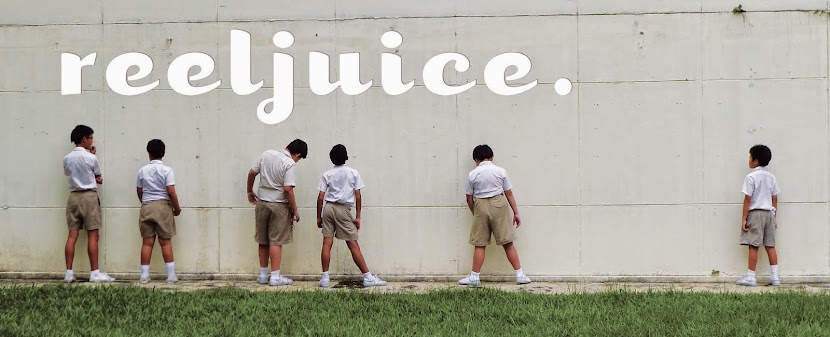I grew up surrounded by enthralling stories, but I remember sitting at many film events in Singapore and not seeing a single film being about my people, my community, its achievements, and its struggles. I remember seeing many great films of international acclaim, yet none of them “spoke” my language as a Singaporean-Malay. The Singaporean-Malay, in the land of their ancient ancestors, seemed like an entity that no one knew about. I felt disconnected from the world that was constructed on the screen. The films spoke to the dominant demographic in attendance – the Singaporean-Chinese. Amidst the films from Taiwan, Hong Kong and China there were already a handful of films that were made by local Singaporean-Chinese. Thus there were already some representations of locals of Singapore-Chinese heritage. In a country where the Singaporean-Chinese make up 75% of the population, the Singaporean-Malay 15% and the Singaporean-Indian 7%, this viewing demographics and the dominance of Chinese films is to be expected.
There were films from Malaysia and Indonesia in Bahasa Melayu and Bahasa Indonesia respectively. However none of the gritty, insular stories about the kampung (rural, village) heartlander or those adapting in the peripherals of big cities, that regularly feature in films from Malaysia and Indonesia at film festivals, matter much to me.
This was sometime in the late 90s and the early 2000s. The last films from Singapore made in the Malay language ended in the late 60s when Singapore separated from the Federation of Malaya. With independence, the local lingua franca changed from Malay to English. Cinema habits changed too as the demand was largely from Hollywood and Bollywood. Occasionally there were films from Hong Kong.
Sitting in the cinema then, something triggered at the back of my head and it was not about the foreign films that I was watching. It was something about the relevance of my voice, and where this voice situates itself in Singaporean contemporary cinema. It was also about how I would tell the world audience about Singapore and Singaporeans. A city state cannot proudly authentically claim itself to be “multicultural”, when its media is only representing one ethnic facet of its reality. Simply showcasing all the four official languages and their respective ethnicities in one programme is not reflective of “multiculturism”. Having that token local Malay in one programme in a predominantly Chinese programming is not representation. Put bluntly, it is insulting window dressing.
In 2005, I wrote, produced and directed my first indie film, LOST SOLE. Other than being Singapore’s first film in the Malay language since independence, I pushed further by writing some of the dialogues in the Baweanese language. This was my way of giving tribute to my Baweanese heritage and my grandparents who hailed from the Bawean Island in Java, Indonesia. It was also my way of pointing a finger to the four nationally-sanctioned official languages in state-run media.
 |
| A still from LOST SOLE (2006) |
LOST SOLE is about an elderly Malay man who lost his slippers at the mosque after the Friday congregational noon prayers. More importantly, it was a film dedicated to my late father who walked barefoot for two kilometers home after losing his slippers one Friday at the mosque. LOST SOLE travelled to more than 30 film festivals. It was subsequently showcased at the Museum of Modern Art in New York. During these festivals, I had to explain to the large international audiences who were not aware of the Singaporean-Malay existence because they were only familiar with the Malays in Malaysia and the Bahasa spoken in Indonesia from these countries’ respective films. I was happy that the Singapore-Malay was being seen internationally – finally!
After LOST SOLE, I made two other indie short films A LA FOLIE (2008) and AMEEN (2010). These films are centered on the Singaporean-Malay and looked at ironies and conflicts between “Malayness” and Islamic spirituality. Subsequently I was beyond excited to do my first feature, SAYANG DISAYANG (2013) that I wrote, produced and directed. I felt that after the success of the three short films in world cinema – and presenting a more nuanced multicultural Singapore, SAYANG DISAYANG would have access to state funding. However, that was not to be the case. Eventually the film was made independently after it failed to receive state funding after two long years of flip-flopping between the agencies. SAYANG DISAYANG was about a caregiver who is desperate to re-create the Sambal Goreng recipe made by the deceased wife of her lonely and testy wheelchair-bound Singaporean employer, in efforts to break down the emotional barriers between them. SAYANG DISAYANG was awarded Best Asian Film (Jury’s Prize) at the Salamindanaw Asian Film Festival and subsequently and rather ironically became Singapore’s official entry in the 2015 Oscars (Foreign Language Film).
From these experiences, I take it upon myself to ensure that Singaporean-Malay voices are heard. It seems, if I don’t do it nobody else will – or somebody else may try to and do it disrespectfully. These days whenever I was commissioned by state agencies to do public video campaigns, I deliberately incorporate Malay story elements into these videos.
Films are incredibly important historical documentation for future generations of Singaporeans. The respective communities need to be assured that their voices matter even when commercial cinema dictates otherwise. Despite the challenges of showcasing minority voices, they can be inspired by filmmakers telling more stories that matter in the community. Telling stories that “speak” to communities unite, empower and inspire them. That has become my life-calling as a story-teller.










